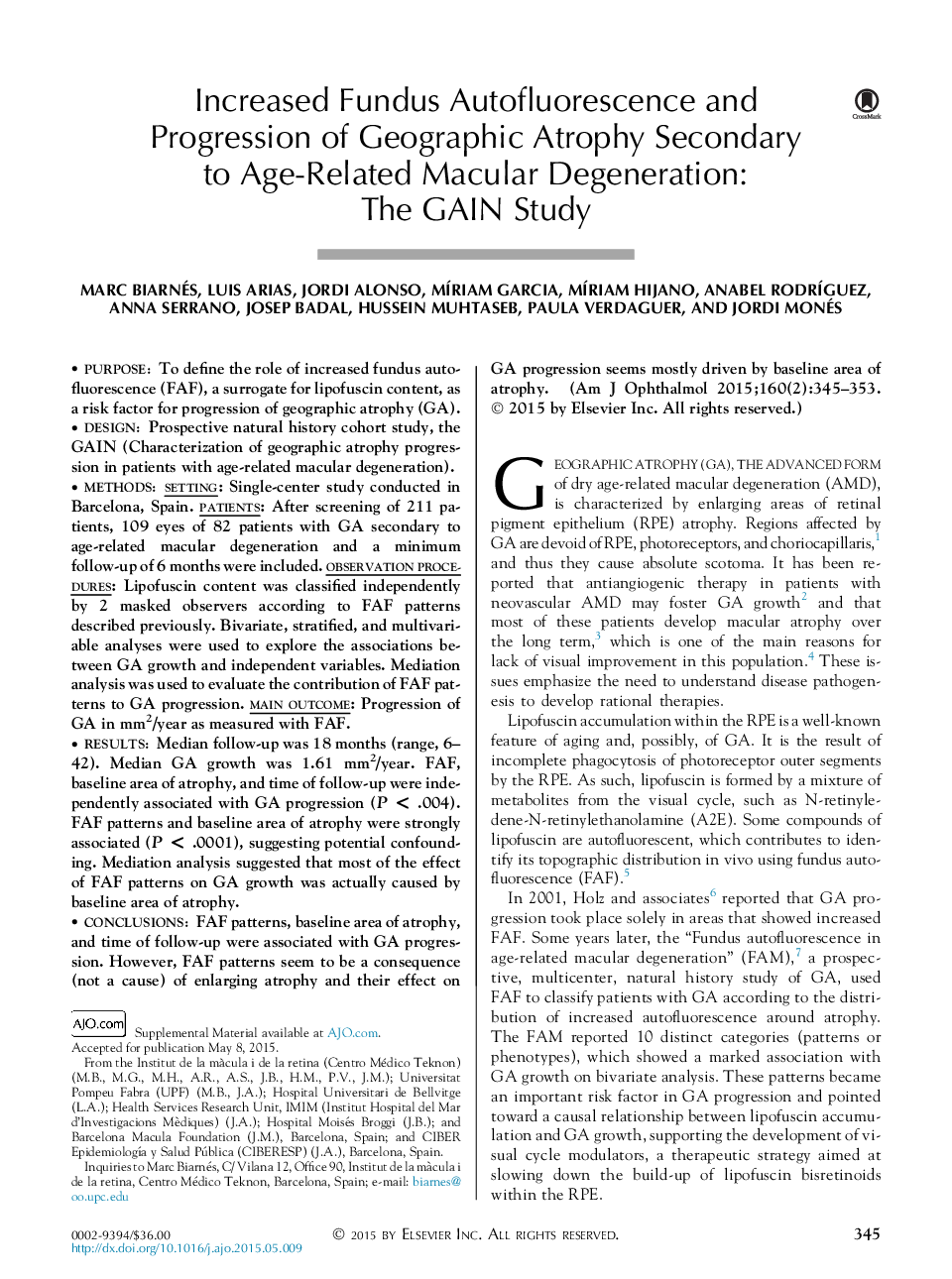| کد مقاله | کد نشریه | سال انتشار | مقاله انگلیسی | نسخه تمام متن |
|---|---|---|---|---|
| 6195275 | 1602121 | 2015 | 14 صفحه PDF | دانلود رایگان |

PurposeTo define the role of increased fundus autofluorescence (FAF), a surrogate for lipofuscin content, as a risk factor for progression of geographic atrophy (GA).DesignProspective natural history cohort study, the GAIN (Characterization of geographic atrophy progression in patients with age-related macular degeneration).Methodssetting: Single-center study conducted in Barcelona, Spain. patients: After screening of 211 patients, 109 eyes of 82 patients with GA secondary to age-related macular degeneration and a minimum follow-up of 6Â months were included. observation procedures: Lipofuscin content was classified independently by 2 masked observers according to FAF patterns described previously. Bivariate, stratified, and multivariable analyses were used to explore the associations between GA growth and independent variables. Mediation analysis was used to evaluate the contribution of FAF patterns to GA progression. main outcome: Progression of GA in mm2/year as measured with FAF.ResultsMedian follow-up was 18Â months (range, 6-42). Median GA growth was 1.61Â mm2/year. FAF, baseline area of atrophy, and time of follow-up were independently associated with GA progression (P < .004). FAF patterns and baseline area of atrophy were strongly associated (P < .0001), suggesting potential confounding. Mediation analysis suggested that most of the effect of FAF patterns on GA growth was actually caused by baseline area of atrophy.ConclusionsFAF patterns, baseline area of atrophy, and time of follow-up were associated with GA progression. However, FAF patterns seem to be a consequence (not a cause) of enlarging atrophy and their effect on GA progression seems mostly driven by baseline area of atrophy.
Journal: American Journal of Ophthalmology - Volume 160, Issue 2, August 2015, Pages 345-353.e5